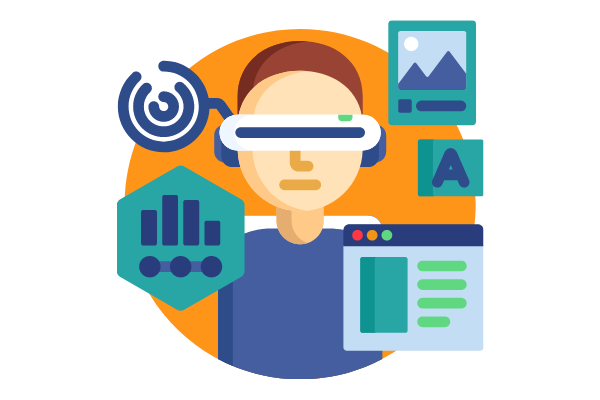The augmented reality industry has come a long way in the last decade, which makes it an exciting time to be an AR entrepreneur looking at how trends will shape the industry in 2022.
As augmented reality grows in popularity and finds its way into new arenas, there will be plenty of opportunities to get creative and make money from the technology if you know what to expect from the market this far out.
Here are 10 major augmented reality trends that entrepreneurs should consider as they plan their AR business models for 2022 and beyond.
1) Artificial Intelligence and Smart Devices
AI is changing how we interact with technology, including smartphone apps and digital assistants. Every year, AI becomes more competent, responsive, and even more natural to use, but 2017 was a breakout year thanks to advances in machine learning and hardware that can run AI-driven systems onboard devices.
It’s clear that AI is just getting started—and it will likely be fundamental to our mobile experiences within two years.
2) Smart City Integration
Once new development is complete, internet-connected appliances and systems will be integrated into city infrastructure, helping to optimize further public services and address environmental challenges like climate change.
This trend will help usher in smart cities that are safer, more resilient, and more sustainable than ever before.
3) We are Going to See a Boom in Business-To-Business-Apps
Early business-to-business AR companies like Visual Vocal have already started to show us what’s possible. When more businesses understand how they can implement augmented reality in their day-to-day operations, we will see more business-focused apps created.
4) AR is Going Global
According to a recent study, 82% of Americans believe that AR will become mainstream in just five years. Developing a home-grown AR app or entering into an AR app development project is not something you want to ignore.
You should work with a reliable and well-established AR app development company to ensure your products and services are competitive globally.
5) People Will Use Even More AR on The Go
Smartphones, wearables, and standalone headsets will all integrate AR experiences. As users have more mobility with their devices, they will demand AR apps and a seamless experience as they move throughout their day.
The Augmented reality app development company in India will continue to bridge their mobile experiences with these new technologies. Get ready for more AR in your mobile wallet, at traffic lights, and on public transit maps.
6) AR Content Will Get More Creative
This is somewhat of a no-brainer, but as AR apps become more popular and are in use by more people, developers will feel increasingly comfortable stretching their imaginations when creating content.
One big reason why games like Pokémon Go were so popular is that they were fun—people want to see what AR can bring them, other than hidden Pikachu. Augmented reality technology will look less like a novelty and more like an additional tool in our everyday lives.
7) Multisensory User Experience Will be Improved Through Haptics
The term haptics was coined in 1963 and referred to touch or any form of human-technology interaction that involves more than just our eyes and ears.
Touch-enabled devices such as smartphones already generate haptic feedback—try your favorite mobile game on a device without it, like an old-school BlackBerry, and you’ll get an idea of what we’re missing out on.
Haptics will become even more important as AR technology becomes more widespread; we won’t want to interact with virtual objects only through our screens and physical interfaces like buttons and knobs.
With haptics enabled, AR systems will feel much less isolating; they’ll make us feel like we are really interacting with virtual objects instead of just staring at them on a screen.
8) Smart Eyewear Integration Will Improve Tremendously
With smart eyewear becoming more comfortable, intuitive, and stylish in design, it’s no surprise that over half of all American consumers are planning to purchase smart glasses within a year.
The only challenge holding back mass adoption is software integration; as hardware prices drop and hardware becomes easier to integrate into existing devices, we will see a huge increase in apps explicitly designed with eyewear interfaces in mind.
9) Head-Mounted Displays are Expected to Reach the Mass Market by 2022
A head-mounted display, or HMD, is a hardware device that’s worn on your head like a helmet, pair of glasses, or a visor. It’s equipped with some form of computer display positioned in front of one or both eyes to give you an immersive experience in your chosen field of vision.
Today’s most common type is virtual reality (VR) headsets used in video games and entertainment applications. As gaming becomes more popular, demand for affordable VR headsets will rise. By 2022, it’s estimated that there will be over 3 billion active gamers worldwide – nearly half of whom are expected to use HMDs.
This means there will be many opportunities for developers and manufacturers to enter these markets.
10) Scalability of Mixed Reality Systems Will be Achieved Thanks to Cloud Technologies
The ability to host content remotely will allow for increased adoption of AR by major cloud service providers, which should, in turn, lead to faster, better development tools and easier access to low-cost hardware.
Read Also: Top 8 Web Design Trends To Follow In 2022
Conclusion
It’s still too early to know precisely what impact AR will have on consumer behavior and industry revenue, but we may look back at these early days as a turning point in computing in a decade.
We could be witnessing a massive shift away from mobile screens—which are often too small for immersive experiences—and toward increasingly powerful wearable devices and displays that aren’t constrained by physical space.

